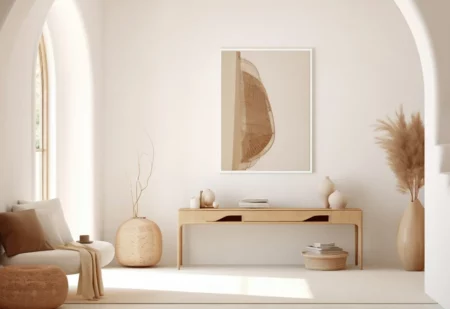 Scandinavian interior design is renowned for its simplicity, functionality, and timeless elegance. Rooted in the design philosophies of Nordic countries, the principles of this style embrace a harmonious blend of form and function.
Scandinavian interior design is renowned for its simplicity, functionality, and timeless elegance. Rooted in the design philosophies of Nordic countries, the principles of this style embrace a harmonious blend of form and function.
Scandinavian interior design is characterized by clean lines, a neutral color palette, natural materials, functional furniture, a cozy ambiance, an abundance of natural light, stylish lighting, and personalized touches.
Here are the key principles that define Scandinavian interior design. By embracing these principles, you can create a timeless and inviting Scandinavian-inspired space that embodies both simplicity and sophistication.
1. Clean Lines and Minimalism
At the core of Scandinavian design is a commitment to clean lines and minimalism. Furnishings and decor feature simple, uncluttered forms that emphasize functionality. The focus is on creating a serene and clutter-free environment.
2. Neutral Color Palette
A neutral color palette is a hallmark of Scandinavian design. Whites, grays, and soft pastels dominate the color scheme, creating a bright and airy atmosphere. The use of light colors contributes to the sense of openness and reflects the limited natural light in Nordic regions.
3. Natural Materials
Scandinavian design embraces the use of natural materials to bring warmth and texture to spaces. Wood, particularly light-colored woods like pine and birch, is a prevalent choice for flooring, furniture, and accents. Natural textiles like wool and linen further enhance the tactile appeal.
4. Functional Furniture
Functionality is a key consideration in Scandinavian design. Furniture is selected for its practicality and usefulness. Pieces often serve dual purposes, such as storage beds or multipurpose tables, contributing to an efficient use of space.
5. Hygge: Cozy and Inviting Ambiance
The concept of “hygge,” a Danish term representing coziness and comfort, is integral to Scandinavian design. Creating a warm and inviting ambiance through soft lighting, textured textiles, and comfortable seating is essential in achieving the hygge atmosphere.
6. Abundance of Natural Light
Maximizing natural light is crucial in Scandinavian interiors, given the long, dark winters in the region. Large windows, sheer curtains, and strategically placed mirrors are used to enhance the entry of natural light, contributing to a bright and uplifting atmosphere.
7. Functional and Stylish Lighting
Lighting is both functional and stylish in Scandinavian interiors. Pendant lights, floor lamps, and table lamps with clean and simple designs add visual interest while providing adequate illumination. The goal is to create a well-lit and welcoming space.
8. Personalized Touches and Sentimental Objects
While minimalism is a key principle, Scandinavian design also allows for personalized touches. Sentimental objects, artwork, or unique decor items are carefully curated, adding a touch of personality to the clean and understated backdrop.
Picture Credit: Freepik



